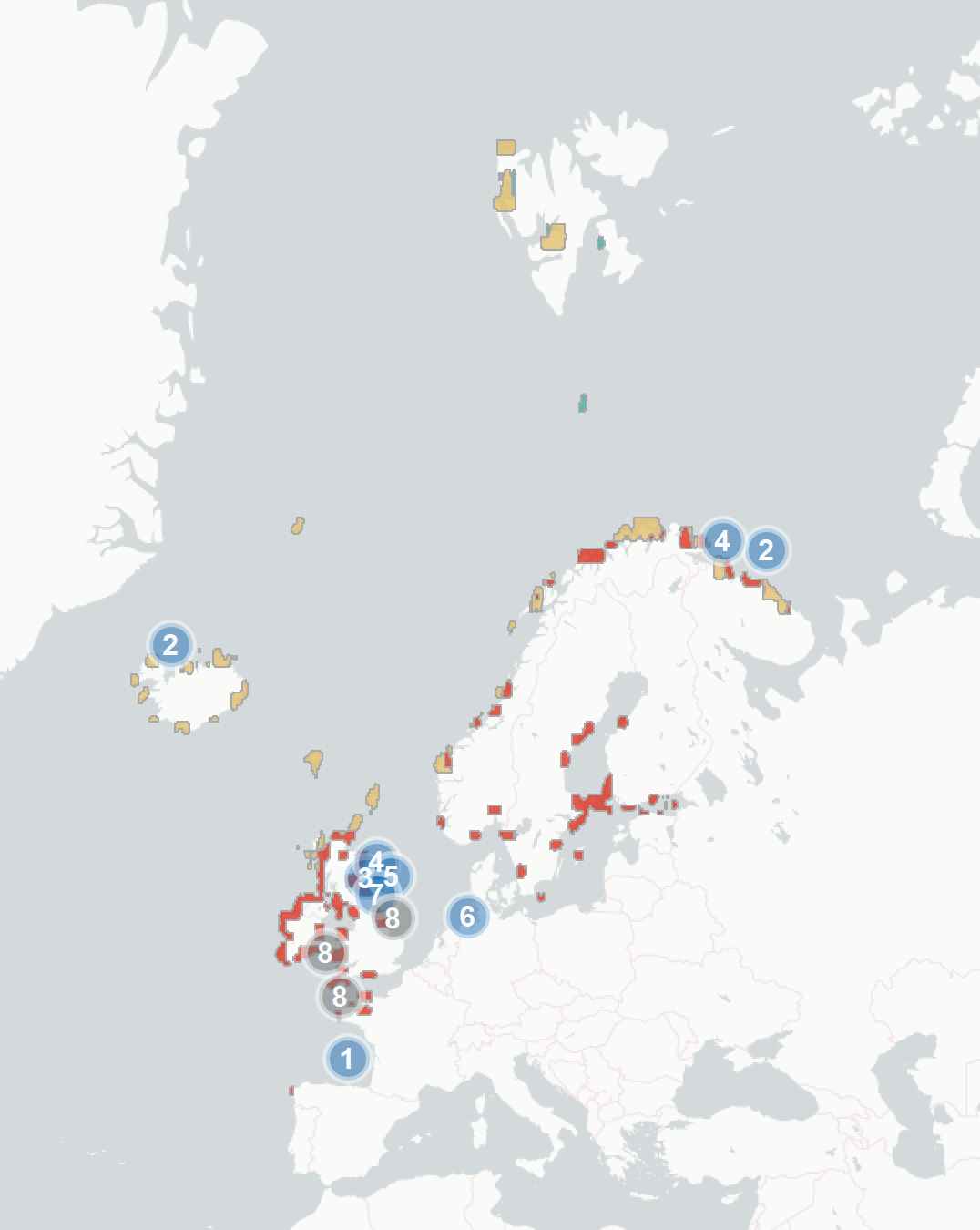Common Murre (Uria aalge): vulnerability to climate change
Evidence for exposure
Potential changes in breeding habitat suitability:
-
Current breeding area that is likely to become less suitable (66% of current range)
-
Current breeding area that is likely to remain suitable (31%)
-
Current breeding area that is likely to become more suitable (3%)
Current impacts to Common Murres attributed to climate change:
-
Negative Impact: High-wind events in the non-breeding season have led to mass mortality of murres in recent years.
-
Negative Impact: Extreme storms during the non-breeding season have led to mass mortality of murres (‘wrecks’).
-
Negative Impact: More frequent extreme storms during murres’ breeding season has increased foraging difficulty and reduced food fed to chicks.
-
Negative Impact: Changes in murres’ prey availability during the breeding season has led to decreased breeding success
-
Neutral Impact: Murres are more likely to skip breeding in warmer weather, and this behaviour is becoming more frequent. While this is a cause for concern, it is unclear what effect this will have on the population in the long-term.
-
Negative Impact: Heatwaves have resulted in significant murre chick mortality. The frequency and severity of heatwaves is likely to increase.
-
Neutral Impact: Common murres have changed their phenology, most likely in response to climate change. Changes in temperature and prey availability correlate to change in laying date.
Predicted changes in key prey species:
-
Key prey species are likely to decline in abundance on the southern coast of England, in the Irish Sea, and across the east coast of Scotland
Sensitivity
-
Murres are prone to sporadic mass-mortality events (“wrecks”), both across Europe and in North America. The likely cause varies between wrecks, ranging from summer heatwaves, to prolonged extreme wind events in winter. Changes in extreme weather are likely to have significant effects on murre mortality.
-
Murres in the Baltic are dependent on sprat as a food source and studies suggest they have limited ability to switch to other prey items. Declines in sprat due to climate change would likely have a severe impact on murres
-
Murre colony success across Europe seems to be tied to copepod abundance, as they support many fish species. In recent decades many areas in the south of the north-east Atlantic have become less suitable for copepods and this trend is likely to continue in the future. A decrease or range shift in copepods will likely have severe impacts on seabird colonies in the north-east Atlantic.
-
This species has a long generation length (>10 years), which may slow recovery from severe impacts and increases population extinction risk
-
While most populations in Europe are stable, some are declining rapidly (notably in Iceland). Any additional pressure from climate change is likely to accelerate these declines
Adaptive capacity
-
There is evidence murres can change their phenology in response to temperature changes. Some populations have shifted their laying date in correlation with temperature changes, others have not. Other populations have changed their arrival date after migration, but not their laying date.
-
There appears to be a weak genetic structure across colonies, which could be a result of high dispersal between colonies. This may increase resilience and aid population recovery following wrecks.
-
In contrast to murres in the Baltic (see Sensitivity section), studies on populations in the North Sea have found that murres can switch prey to compensate for prey availability.
